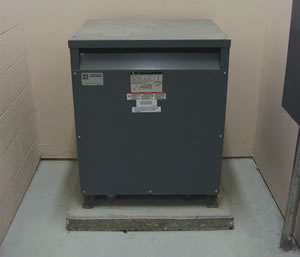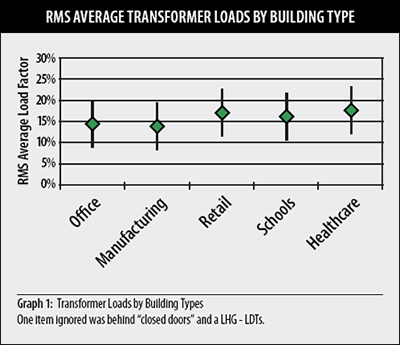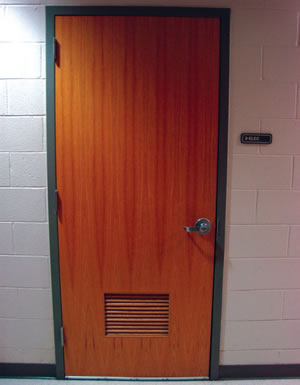Overlooked "Low Hanging Fruit" Behind Closed Doors

PHOTOS COURTESY OF LORENZ SCHOFF
“Energy conservation” were the words heard by many, either as students or administrators, after the 1973 oil embargo and emphasis increased with the second oil crisis in 1979 with the decrease oil production as a result of the Iranian revolution. These oil crises not only impacted crude oil prices but also the price of electricity, natural gas and coal. “Energy Conservation” could be heard in the boardrooms and hallways of our nation’s schools and universities, because of its impact on budgets. Actions taken were based solely on energy conservation, not energy efficiency. All of these actions were taken with no consideration on the educational impacts.
After the crises of the ‘70s ended, with new sources of oil — Alaska, Venezuela, Nigeria, North Sea — energy conservation waned during the 1980s. In the middle of the 1990s, emphasis on energy efficiency again was revived. Seeds for LEED were sown when environmental and energy issues merged. Oak Ridge National Labs (ORNL) conducted a study on the efficiency of distribution transformers, both power and Low Voltage Distribution Transformers (LVDT). Most electrical power comes into an educational facility at 480/277 volts, and it is transformed down by LVDT to 120/208 volts, providing the electricity to the outlets in the classrooms and throughout the building. This power is essential for teaching tool devices and systems used on a daily basis by teachers and students.

The ORNL study discovered, LVDTs used in our schools were made less efficient between the late ‘60s and 1995, due to the emphasis on first cost and not life cycle cost (LCC). The same study found the power distribution transformers efficiency increased between the ‘50s and 1995, because utilities realized it was less expensive to improve their efficiency than to build new power plants. NOTE: LVDTs consume electrical energy 24/7, and when not with loads, the energy consumed is defined as “No Load Losses (NLL)”. Dependent on the size of the LVDT, the NLL can range from 100s of watts to 1000s of watts. As a result of this ORNL study, U.S. Department of Energy (DOE) began a study on low voltage distribution transformer (LVDT) design to reduce NLL, and how to improve their impact on the electrical efficiency of buildings in the country.
As the 20th century ended, educational buildings began surveying their buildings to identify areas where energy efficiency improvements could be made. The “low hanging fruit” (LHF) were immediately identified: Replacement of incandescent fixtures with fluorescent lamps and fixtures, incandescent fixtures with HID/ fluorescent in high bay and gym areas, upgrading of boilers and AC compressors, weather stripping, motors and motor controls, upgrading exterior lighting, and the list goes on. In addition, a study was conducted at the request of the Northeast Energy Efficiency Partnership, on the loads on distribution transformers in various building types: Schools, Healthcare, Offices, Manufacturing, and Retail. See Graph 1 for results.
As the 21st Century began, more and more emphasis was being placed on high-performance design and Energy Efficiency (EE). In California, the Collaborative for High Performance Schools (CHPS) was established and its design guides were developed and adopted by California Schools. CHPS has been adopted to date by 13 states. At the same time, the U.S. Department of Energy started a program named, “Rebuild America/EnergySmart Schools. EnergySmart Schools (ESS) developed high-performance design guides for schools in each major climate zone of the country. LEED for New Construction was released and schools experimented with using this document. LEED for K-12 schools was released in 2007, and since has been revised and updated.
The proposed ruling resulting from the DOE study to improve the design of LVDT was issued in the July 2004 Federal Register(c). At that time, it was estimated over 40 million distribution transformers were in the country’s buildings. The proposed ruling outlined five (5) recommended designs labeled Candidate Standard Level (CSL) -1 through 5 with CSL-1 known as TP-1 — the minimum, and CSL-3 with the lowest LCC. Note: The efficiency standard was based on 35 percent load on the transformer and linear loads — incandescent lamps, electric heaters, overhead/slide/35mm projectors, CRT TV’s and monitors, typewriters, adding machines, etc. Linear loads were common in the ‘60s, ‘70s and ‘80s, but not the ‘90s and the 21st century, with the majority now being non-linear or electronic. The estimated energy savings at the time, if all existing LVDT (40+M) could be replaced with CSL-3’s would be equal to 9 days of electrical generation in the nation annually — billions of kWh.

PHOTOS COURTESY OF LORENZ SCHOFF
Hidden Cost and Savings. If you are planning new school construction or major renovation project(s) beginning now or after the first of January 2016, you should learn more about the new U.S. DOE requirements and provide them to your design professionals. You should also search out existing companies who currently manufacture LVDTs meeting or exceeding the new requirements. The quicker you install, the more savings both in energy and dollars will be realized.
Energy legislation passed in 2005, known as EPACT 2005, established the TP-1 as the minimum efficiency LVDT and eliminated EnergyStar transformers. Linear loads were the basis, when non-linear loads (electronic) were reality. Non-linear loads introduce more inefficiency into the TP-1 or similar LVDT, making the need for specifications achieving high efficiencies at real-world loads — points less than 35 percent non-linear. Non-linear loads include items like: CFL’s, flat screen TV’s and monitors, portable/tablet/desktop computers, printers/copiers/scanners, and the list goes on. In educational facilities more than 60 percent of the plug loads are non-linear.
The number of LHF LVDTs in an existing elementary school is 2 to 5, a middle school, 8 to 14 and a high school, 12 to 25. New designs have similar numbers. These numbers mean an existing elementary school could be wasting between 20,000 to 40,000 kWh per year, or the equivalent of leaving on classroom lights, year round 24/7, in 2.5 to 5 classrooms.
U.S. DOE Final Ruling on Distribution Transformers
The DOE final ruling for the study beginning at the end of the 20th century was published in the Federal Register in April 2013. This ruling takes effect January 1, 2016. The following is a summary of the ruling and the actions recommended to Ensure maximum efficiency of the electrical system and establishment of a foundation for the achievement of Net-Zero in new buildings or major renovations, today and in the future. “Net-Zero-Energy Building - NZEB” means a building is designed, constructed and operated requires a reduced quantity of energy to operate, meets the balance of energy needs from sources of energy that do not produce greenhouse gases, and result in no net emissions of greenhouse gases and economically viable”. EE LDVT – 2016 – will ensure a major component (foundation) of the building’s electrical system has the highest efficiency — using minimum energy. Achieving Net-Zero is based on minimum energy use and is becoming a requirement of more and more building codes and governments in the future. Targets for achievement range from 2020 to 2050.
If you are planning new school construction or major renovation project(s) beginning now or after the first of January 2016, you should now learn more about the new 2016 LVDT requirements of U.S. DOE and provide them to your design professionals. In addition to learning the 2016 LVDT requirements, you should search out existing companies who currently manufacture LVDTs meeting or exceeding the 2016 requirements, including non-linear testing. The quicker you install, the more savings both in energy and dollars will be realized.
Summary of Final Ruling (Basics)
- CSL3 nor NEMA Premium are not completely compliant with new ruling
- TP1 can no longer can be built after Jan. 1, 2016
- LVDT designs no longer designated by CSL # 1-5 but by Efficiency Level (EL) # 1-7, with EL #6 as the Lowest LCC by DOE
- Efficiency standard based on linear load of 35 percent
Actions to be Taken to ensure Maximum Efficiency of Electrical Systems
- Determine current manufacturers of LVDT transformers meeting 2016 requirements including performance with non-linear loads
- Specifications should include at least the following requirements
- Efficiencies equal or exceed US DOE 2016 minimum standards – Federal Register Vol.78, No.75/Thursday April 18, 2013; Dept. Of Energy 10CFR Part 431
- No load losses must comply with NEMA ST20
- Efficiency at low load and under nonlinear K-7 loading must meet the minimum requirements of standards; K-7 efficiency load profile at 16.7 percent, 25 percent, 50 percent, 75 percent, and 100 percent
- Comprehensive testing under linear and nonlinear loads to verify performance requirements; Submittal of performance testing results in writing
- Provide 2016 information to your EMP design professional and require these units in all future projects including the minimum specification requirements as outlined above.
LVDTs, once installed, require no maintenance, are 99-percentplus reliable, consume energy 24/7 loaded or not, and have a normal life that is as long as the building. Installing 2016 transformers meeting above specifications, can mean an annual savings per transformer from thousands to tens of thousands of kWh, dependent on size.
Requiring the 2016 mandated transformers complying with nonlinear requirements in new construction or major renovations today, establishes a firm foundation for accomplishment and sustaining of Net-Zero building performance today and in the future, with a significant saving in energy and dollars over the life of the building.
Requiring an ECM in a performance contract to replacing existing LVDTs with the 2016 LVDT complying with non-linear requirements, will also result in significant energy savings and a reduction in payback period for the entire contract. LVDT’s — the hidden/overlooked “low hanging fruit” — when specified or replaced with the 2016 mandate LVDT will result in providing a firm foundation on which to base all future energy management actions and the potential achievement of facilities meeting Net Zero in the future. The choice is yours.
This article originally appeared in the issue of .